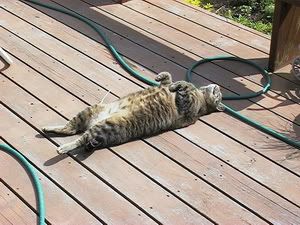In a non-diabetic, there are two hormones that maintain blood glucose levels. These are insulin, and glucogen, both produced by the pancreas. Insulin allows the body to use sugar in the blood or to store it for later use. Glucagon is basically offering a moderating effect to insulin by causing cells to release glucose. Therefore, in a non diabetic, if the blood sugare goes too low, the glucagon will utilize some of the stored glucose. These hormones work together to moderate blood sugar levels.

This sharp drop followed by unusually high blood glucose levels is known as Somogyi rebound.
Because of all the hormones involved in this process, this rebound may last several cycles,
punctuated by higher blood glucose levels. The blood glucose curves will possibly be flat and high, which normally indicates that more insulin is required. However, this is not the case and the treatment for somogyi is a REDUCTION in insulin, to stave off the precipitious drops that start the whole cycle.
Somygi is difficult to detect but if you are having trouble regulating your cat despite increasing insulin levels, please discuss with your veterinarian the possibility of somogyi rebound.